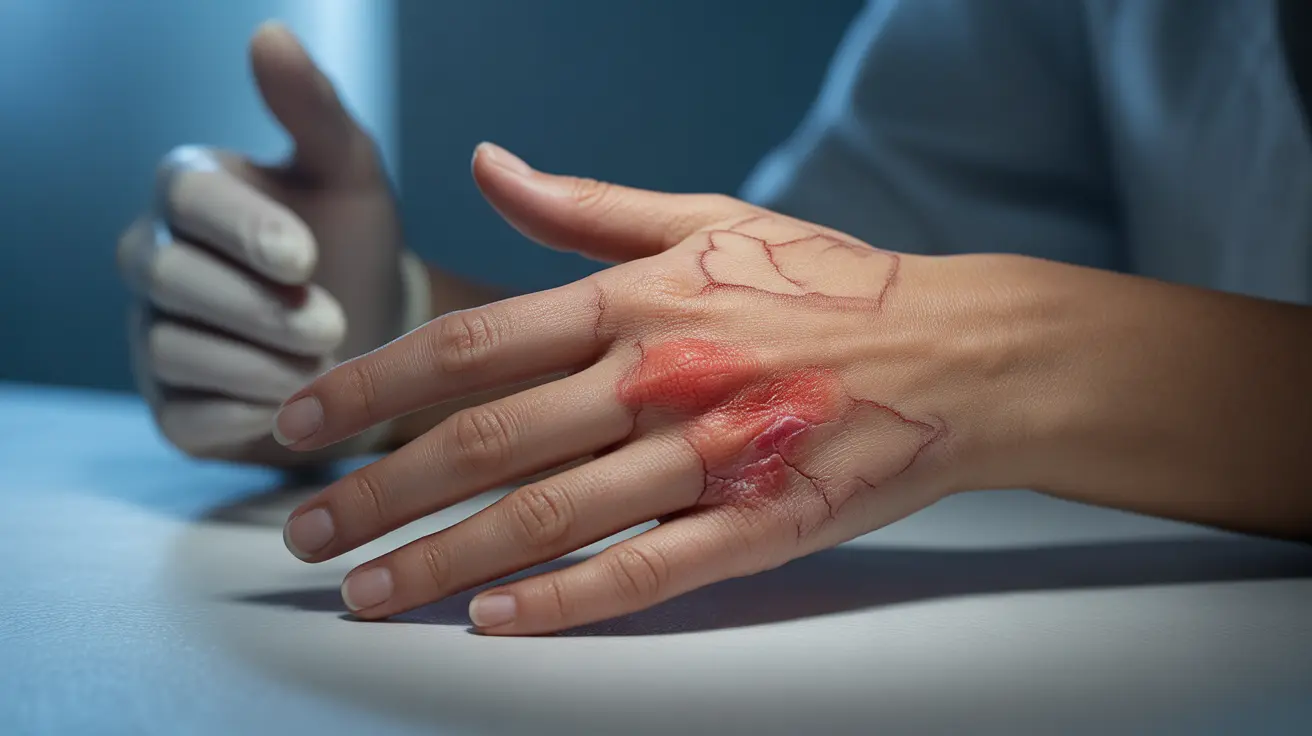Asteatosis cutis, also known as asteatotic eczema or eczema craquelé, is a skin condition characterized by extremely dry, cracked skin that can cause significant discomfort. This condition most commonly affects older adults and can be particularly troublesome during winter months when environmental factors contribute to skin dehydration.
Understanding the causes, recognizing symptoms early, and implementing proper treatment strategies are crucial for managing this condition effectively. Let's explore the key aspects of asteatosis cutis and learn how to maintain healthy, hydrated skin.
What Causes Asteatosis Cutis?
The primary cause of asteatosis cutis is a significant decrease in the skin's natural oils and moisture content. Several factors can contribute to this condition:
- Low humidity environments
- Excessive bathing or hot showers
- Harsh soaps and cleansers
- Age-related changes in skin barrier function
- Certain medications that can dry out the skin
- Underlying medical conditions affecting skin health
The skin's protective barrier becomes compromised when it loses its natural oils, leading to increased water loss and subsequent cracking of the skin surface. This creates the characteristic appearance often described as "crazy paving" or "crackled porcelain."
Identifying Symptoms and Affected Areas
Asteatosis cutis typically presents with distinct characteristics that help differentiate it from other skin conditions:
Primary Symptoms
- Extremely dry, scaling skin
- Superficial cracks forming geometric patterns
- Redness and inflammation
- Itching and discomfort
- Possible bleeding in severe cases
Common Affected Areas
- Lower legs
- Arms and hands
- Lower back
- Abdomen
- Other areas exposed to environmental factors
Treatment Approaches and Management
Effective treatment of asteatosis cutis focuses on restoring skin moisture and protecting the skin barrier. A comprehensive approach typically includes:
Topical Treatments
- Heavy-duty moisturizers and emollients
- Barrier repair creams
- Prescription corticosteroids for inflammation
- Specialized ointments for severe cases
Lifestyle Modifications
- Using lukewarm water for bathing
- Limiting shower or bath time
- Applying moisturizer immediately after bathing
- Using gentle, fragrance-free cleansers
- Avoiding harsh soaps and detergents
Prevention Strategies
Preventing asteatosis cutis involves maintaining proper skin care habits and creating an environment conducive to skin health:
- Use a humidifier during dry seasons
- Wear protective clothing in harsh weather
- Stay well-hydrated
- Choose gentle skin care products
- Monitor medication side effects
- Regular moisturizing routine
Frequently Asked Questions
What causes asteatosis cutis and how does it lead to very dry, cracked skin? Asteatosis cutis occurs when the skin loses its natural oils and moisture, typically due to environmental factors, aging, or medical conditions. This loss disrupts the skin barrier function, leading to increased water loss and subsequent cracking of the skin surface.
What are the most common symptoms of asteatotic eczema or asteatosis cutis? The most common symptoms include extremely dry skin with a characteristic cracked pattern, redness, scaling, itching, and possible inflammation. The affected areas often show a distinctive "crazy paving" appearance.
How is asteatotic eczema treated and what types of moisturizers or medications help the most? Treatment typically involves intensive moisturizing with thick emollients or barrier repair creams, along with possible topical corticosteroids for inflammation. Oil-based moisturizers and products containing ceramides or hyaluronic acid are particularly effective.
Can lifestyle changes or home care prevent or reduce symptoms of asteatosis cutis? Yes, lifestyle modifications such as using a humidifier, taking shorter lukewarm showers, immediate post-bath moisturizing, and avoiding harsh soaps can significantly reduce symptoms and prevent flare-ups.
Are certain health conditions or medications linked to developing asteatotic eczema? Yes, certain conditions like diabetes, thyroid disorders, and HIV can increase the risk of developing asteatosis cutis. Medications such as diuretics, retinoids, and some blood pressure medications may also contribute to its development.




